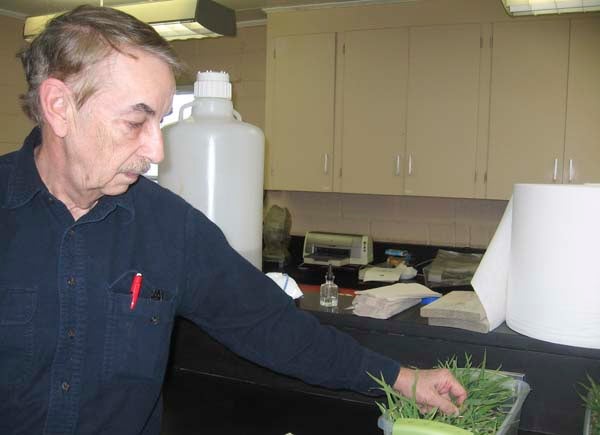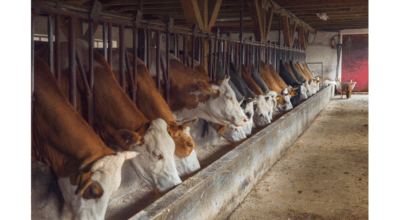Farmers benefit from scientist’s work
Published 11:10 am Wednesday, March 13, 2013

Dr. Pat Phipps points out a sample of barley at his lab in the Tidewater Agricultural Research and Extension Center in Suffolk. Studying causes and treatments of diseases in plants is his speciality. — Stephen H. Cowles | Tidewater News
BY STEPHEN H. COWLES/CONTRIBUTING WRITER
Playback58@gmail.com
SUFFOLK—Dr. Patrick Phipps is still enthused about his work in plant diseases even after 32 years at the Tidewater Agricultural Research Center in Suffolk. He is professor emeritus of plant pathology, physiology and weed science.
Phipps’ longevity and dedication were recently honored with a service award during the annual meeting of the Virginia Peanut Growers Association at the Southampton County Fairgrounds.
“I was honored with that plaque. It was a real surprise. I certainly appreciate it,” said the Suffolk resident.
“What’s most exciting is that whatever we do has impact,” said Phipps, 67. “The industry of growers really appreciates the findings. They’re able to take that and benefit from it. In the case of peanuts, we’ve done really well.”
He said that last year’s crop got $600 a ton.
“For as long as I’ve been farming, Phipps has been a big help to us over the years,” said Ray Davis of Davis and Sons Farms, between Courtland and Sebrell. He grows corn, cotton, peanuts, soybeans and wheat.
Davis added that when he’s had a problem in the past, he’d contact the Southampton County extension agent, such as Chris Drake, who in turn would contact Phipps. The latter would come up with an answer.
Two examples Davis gave are when sclerotina blight and cylindrocladium black rot
affected his farm years ago. Phipps immediately got to work on the blight issue and came up with a product that resolved that issue. Likewise for the latter case, which the professor said is a fungus that causes roots to rot.
“He was foremost in getting that under control,” said Davis.
Drake also praised Phipps for his contributions and dedication even though he’s been semi-retired for over the past two years.
“With over 30 years experience in peanut fungicide, he’s been extremely beneficial to the peanut growers of our area, as well as cotton and soybean producers. In the last 10 to 12 years, Phipps has done a lot of work with plant fungicide, which has been a benefit to small grains growers.”
Dr. Ames Herbert Jr., an entomologist at the center, said that Phipps and he have often worked together.
“His program deals with diseases, mine with insects,” said Herbert. “We’ve collaborated over the years on a number of projects, and try to develop programs that growers face for both situations. We have the advantage of working in the same field plots and trials and so forth.”
Major factors that affect plants include weather, insects and chemical treatments, such as herbicides, pesticides, fungicides and nematicides. The last one is for nematodes, which Phipps said are microscopic worms that feed on plant roots.
“My lab serves as a starting point for diagnosis,” he said. Extension agents and growers are able to bring in samples to determine causes of diseases. Weather data is also regularly tracked and the staff can let farmers know when it’s safe to plant peanuts.
For example, the aforementioned sclerotina blight is a weather-dependent disease, and can be expensive if a farmer arbitrarily were to spray thrice at $120 each time. An advisory can help the grower to keep the spraying to just one pass.
“It can save growers a lot of money,” Phipps said
As with peanuts, other crops such as wheat, soybeans and cotton have profited from the work done by Phipps and his staff.
The West Virginia native said the research center has found “new ways to control diseases in wheat to increase yield.”
As a result, last year wheat was valued at $6.50 per bushel; the yields have been 100-120 bushels per acre. Soybeans, he noted, were at $14.50 a bushel. Cotton was 74 cents a pound.
While there’s been much success of late, the work doesn’t stop.
“There’s plenty more to do,” said Phipps.





